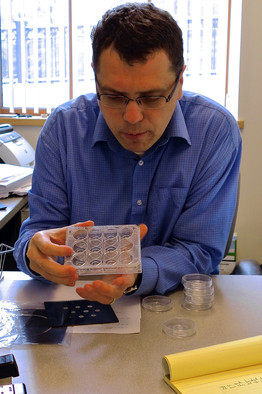Dr. Irimia, a molecular machinist at Harvard Medical School, is busy building a microscopic racetrack for slime molds in the hospital’s $3 million micro-fluidics laboratory in the Charlestown district of Boston.

By his design, the slime cells will pursue a chemical lure as fast as they can through a maze of sharp turns and dead ends, all narrower than a human hair, while their progress is recorded by stereomicroscope cameras and posted live on the Internet for all to see. The winning laboratory stands to win a $5,000 prize and bragging rights as breeder of the world’s fastest slime. “I would do it just for the bragging rights, but money never hurts,” said evolutionary biologist Debra Brock at Washington University in St. Louis, who plans to send her best cells to Boston for the race.
Cell migration is probably the most important thing for our health,” said Dr. Irimia. To grow tissue, fight infection or heal a wound, “you have to get the right cell to the right place at the right time.” Researchers hope eventually to develop drugs able to speed cells up, slow them down or, in the case of migrating cancer cells, halt them.
As track stars, slime molds are in a class of their own—not animal, plant, fungus or bacteria. They likely inspired the devouring amoeba-like alien in a 1958 horror film called “The Blob.”

Indeed, slime has its own entry in the official manual of monsters used in the role-playing game Dungeons & Dragons.
For cell racing, however, not just any species will do. Dr. Irimia and his colleagues will use cells belonging to Dictyostelium discoideum, a slime-mold species favored for experiments in about 100 labs worldwide. “Dicty,” they call it – the social amoeba.

Cheating is allowed. Mutants are welcome. Anything that makes cells move faster is fine. “Dirty molecular tricks, genetic manipulation and doping are not only allowed but are strongly encouraged,” Dr. Irimia’s race rules state.
“Progress in science can come from anywhere,” he said. “So we want to keep the options open.”
To see a video with a full explanation of the 2014 Slime Mold Race you can go to